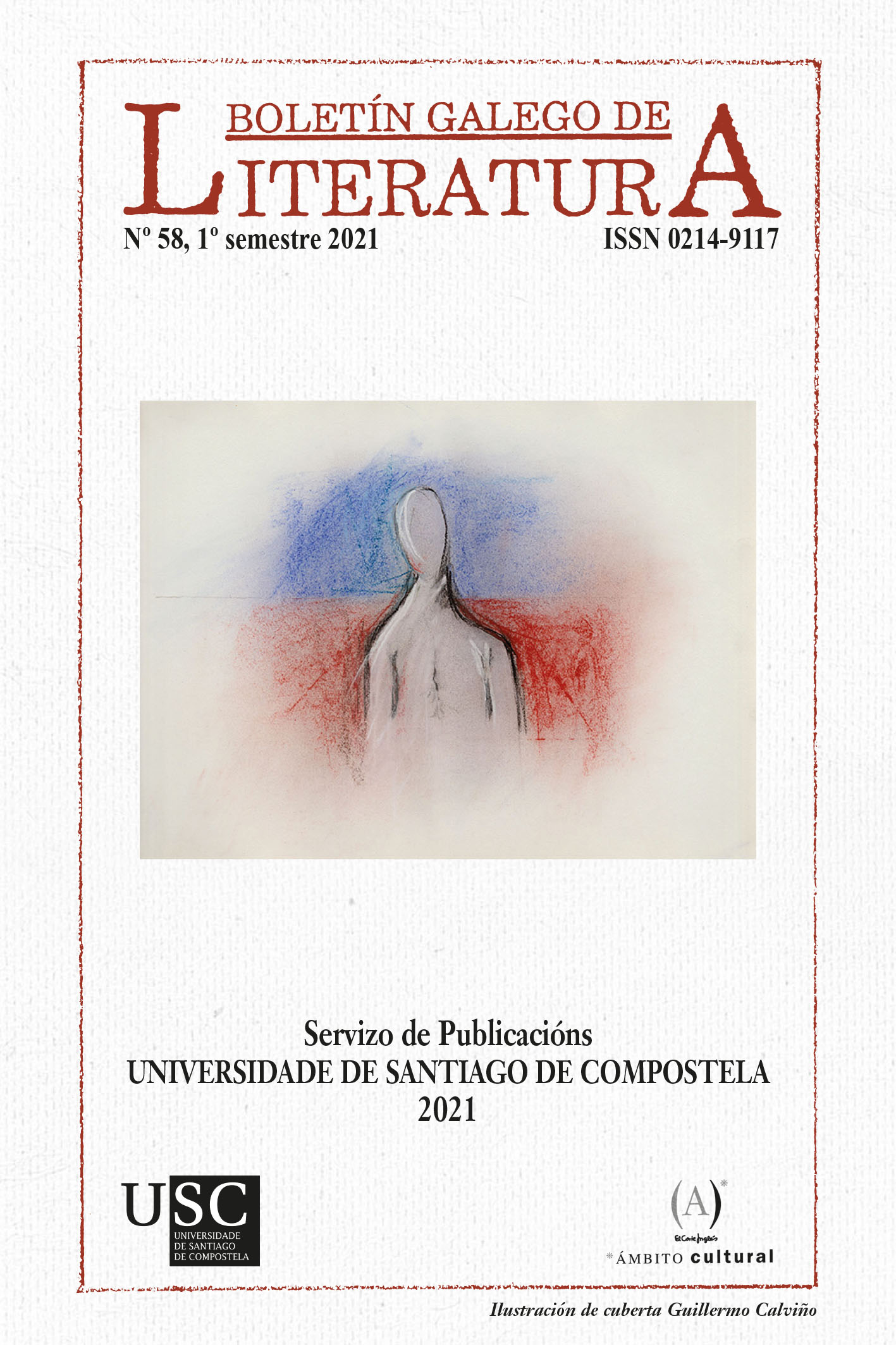Ambiguity in the composition of female characters by Ana Teresa Pereira and Cristina Fernández Cubas
Main Article Content
Abstract
Ambiguity and strangeness permeate the construction of the fantastic characters created by Ana Teresa Pereira and Cristina Fernández Cubas. Both authors depict feminine characters which face power contexts and games of seduction that are equivocal. Using “expanded time” or “convergent time” (cf. D. Roas), or by using “rhizomatic spaces” (cf. P. Garcia), the characters face irreal or impossible events. The purpose is to investigate, in the works Inverness and El Columpio, this erasure of the real in the composition of characters and also, how fantastic figures are built, crediting the dual model of D. Mellier: explicit fantastic versus fantastic of indetermination. The fantastic effects created on the configuration of characters will be analised, as well as the ways that time and space games contribute to the development of them. It will be shown how these figurations question the feminine condition, while being presented as metaphors of feminine subjectivity construct.
Keywords:
Article Details
References
Baroni, R. (2007). La tension narrative: Suspence, curiosité et surprise. Seuil.
Béssière, I. (1974). Le récit fantastique. La poétique de l’incertain. Larousse.
Bieder, M. (2005). Reading the Sign of Spain: Negotiating Nationality, Language and Gender. Em K. M. Glenn e J. Pérez (Eds.), Mapping the Fiction of Cristina Fernández Cubas (pp. 41-65). University of Delaware Press.
Bozzetto, R. e Huftier, A. (2004). Les Frontières du fantastique. Approches de l’impensable en littérature. Presses Universitaires Valenciennes.
Deleuze, G. e Guattari, F. (1980). Mille Plateau. Les Éditions de Minuit.
Fernández Cubas, C. (1995). El Columpio. Tusquets Editores.
Fernández Cubas, C. (2006). Parientes pobres del diablo. Tusquets Editores.
Fernández Cubas, C. (1992). Os Sótãos de Brumal. Editorial Teorema.
Fernández Juarez, G. e Pedrosa, J. M. (2008). Antropologías del miedo. Calambur.
García, P. (2015) Space and the Postmodern Fantastic in Contemporary Literature: The Architectural Void. Routledge.
Herrero Cecilia, J. (2000). Estética y pragmática del relato fantástico: las estratégias narrativas y la cooperación interpretativa del lector. Publicaciones de la Universidad de Castilla-La-Mancha.
Margolin, U. (1995). Characters in Literary Narrative: Representation and Signification. Semiotica, 106, 373-392.
Mellier, D. (1999). L’Écriture de l’excès: poétique de la terreur et fiction fantastique. Champion.
O’Leary, T. (2017). Sensibility. Em M. Bunz, B. M. Kaiser e K. Thiele (Eds.), Symptoms of the Planetary Conditon. A Critical Vocabulary (pp. 149-154). Meson Press.
Pereira, A. T. (2010). Inverness. Relógio d’Água.
Pereira, A. T. (2016). Karen. Relógio d’Água.
Pereira, A. T. (2006). A Neve. Relógio d’Água.
Reis, C. (2018). Figuração. Em Dicionário de Estudos Narrativos. Livraria Almedina.
Roas, D. (2011). Tras los limites de lo real. Una definición de lo fantástico. Editorial Páginas de Espuma.
Roas, D. (2016). Cronologías alteradas. La perversión fantástica del tiempo. Em F. García e M. C. Batalha (Coords.), Vertentes teóricas e ficcionais do Insólito (pp. 106113). Editora Caetés.
Rueda, A. (2005). Effects of the Double in Cristina Fernández Cubas’s Short Story Fiction. Em K. M. Glenn e J. Pérez (Eds.), Mapping the Fiction of Cristina Fernández Cubas (pp. 25-40). University of Delaware Press







